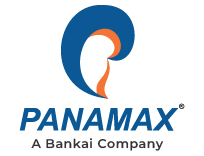The banking industry has undergone a remarkable evolution over the years, with the rapid pace of technological advancements and shifting customer expectations at its core. The market for core banking software was estimated to be worth $12.51 billion globally in 2022 and is expected to reach $47.37 billion by 2030, up from $14.54 billion in 2023. A pivotal element of this transformation is the core banking system. It serves as the foundation upon which modern banks build their operations, ensuring the efficient and secure delivery of financial services. Let's explore the significant trends of 2024 that are poised to redefine the landscape of core banking systems and, consequently, the entire financial industry.
Digital Transformation
The advent of the digital age has propelled the banking sector into a new era. The increased usage of high-speed internet and smartphones has led to customers expecting immediate access to their accounts and services. Consequently, banks are increasingly prioritizing digital core banking solutions to meet these evolving needs. Two key components of this transformation are mobile banking apps and online banking portals, both of which provide customers with user-friendly interfaces to manage their finances with convenience and ease.
In this digital age, the transformation of customer service stands out as a noteworthy development. This transformation is largely driven by the integration of artificial intelligence (AI) into banking operations. Chatbots and virtual assistants have become integral to the customer service landscape, enabling banks to provide round-the-clock support to their clients. These AI-driven systems offer immediate responses to customer queries and further enhance the experience by providing personalized recommendations based on the customer's transaction history, thereby creating a more tailored and engaging experience.
Blockchain and Cryptocurrency Integration
Blockchain technology, known for its inherent security features, is gaining recognition within the banking industry. It has a crucial role in enhancing the security of core banking systems. The blockchain's incorruptible ledger system ensures the integrity of transactions and diminishes the risk of fraud, making it a highly appealing solution for banks. Moreover, the emergence of central bank digital currencies (CBDCs) is another trend to watch closely. Several countries are exploring the issuance of their own digital currencies, which could revolutionize the way financial transactions are processed on a global scale.
The adoption of cryptocurrencies by traditional banks is another noteworthy development. While there has been skepticism in the past, banks are increasingly recognizing the potential of cryptocurrencies as a means of diversifying investment portfolios and providing customers with a broader range of investment options.
Open Banking and APIs
The concept of open banking has the potential to reshape the way banks interact with their customers. Banks can offer their customers a broader array of services by allowing third-party financial service providers access to their core banking systems through Application Programming Interfaces (APIs). This approach fosters innovation through the development of third-party apps, ultimately leading to new and exciting financial products that cater to specific customer needs.
This trend is not only beneficial for banks but also for consumers and businesses. Open banking facilitates seamless data sharing, simplifying processes such as account aggregation, expense tracking, and credit scoring. Moreover, it encourages healthy competition within the financial industry, leading to improved products and services for all.
Regulatory Changes
Evolving banking regulations have always been a challenge for banks and their core banking systems. It is imperative to adhere to these guidelines in order to evade penalties and preserve the confidence of clients. Compliance challenges in the banking industry have become increasingly complex as technology evolves. Among the most pressing concerns are data privacy laws and cybersecurity requirements. Implementing the necessary safeguards to protect customer data is a top priority for banks.
Data Analytics and AI-Driven Insights
For banks, the big data era has created new opportunities. They can now use data analytics to their advantage to learn important details about their customers. Predictive analytics, in particular, is being used for risk assessment, enabling banks to make informed decisions about lending and investments. Additionally, AI-driven solutions are transforming fraud detection and prevention by identifying unusual patterns and alerting banks to potential security threats.
Customer-Centric Banking
In a competitive market, providing personalized services is no longer an option but a necessity. Banks are striving to enhance customer experiences by offering tailored solutions. Personalization in banking services includes customizing product recommendations, sending relevant offers, and addressing customer needs promptly. Building trust is vital in this endeavor, and transparent communication is key to earning and retaining customer loyalty. Core banking systems heavily rely on user experience (UX) design to make sure that consumers have a seamless and gratifying experience while interacting with the bank.
Future-Proofing Core Banking Systems
Banks must make the difficult decision to select between more contemporary alternatives and outdated core banking systems as the banking sector develops. Legacy systems, while reliable, may need more scalability and adaptability to keep up with the rapidly changing technological landscape. Modern core banking solutions, on the other hand, offer the flexibility and innovation required to stay ahead of the curve.
Investment strategies play a crucial role in future-proofing core banking systems. Banks must make well-informed decisions about their technology investments to ensure long-term sustainability. This includes carefully evaluating the pros and cons of various solutions and aligning them with the bank's long-term goals.
Conclusion: Discover Panamax's Core Banking Solution for a Thriving Future
In conclusion, the future of banking is a dynamic landscape shaped by digital transformation, blockchain and cryptocurrency integration, open banking, regulatory changes, data analytics, customer-centric strategies, and future-proofing core banking systems. Banks that embrace these trends and adapt their core banking systems accordingly will be best positioned for success in the years to come.
Panamax is a trusted leader among core banking solution providers, offering innovative solutions that cater to the evolving needs of the banking industry. Their knowledgeable staff can assist you in putting the newest tactics and technology into practice to guarantee your bank's success in 2024 and beyond.
Take advantage of the opportunities that these trends bring. Embrace the future of banking with Panamax's core banking solution and unlock the potential for your institution's growth and prosperity. It's time to lead the way in the ever-evolving world of banking.



















